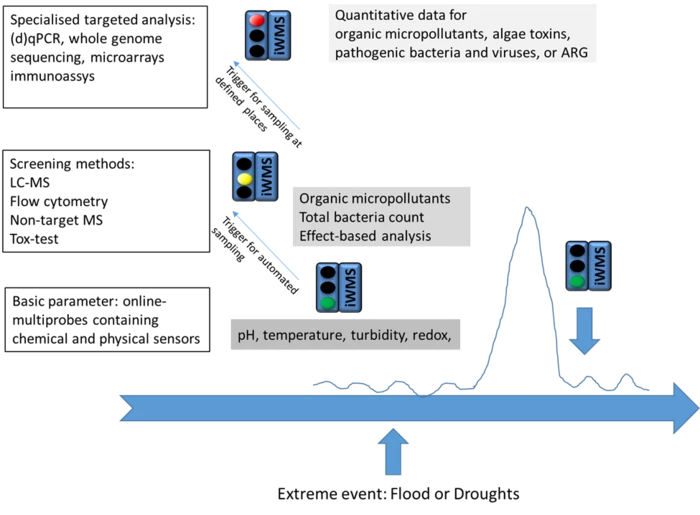Water Quality Monitoring

In the face of accelerating climate change and growing interdependencies between human, animal, and environmental health, ensuring hygiene across diverse water matrices—ranging from raw and drinking water to process and wastewater—has become a critical imperative within the One Health concept. This challenge is deeply intertwined with the evolution of analytical methodologies used to detect and quantify rapidly microbial and viral contaminants.
Recent advances in bioanalytics have transformed our capacity to monitor waterborne pathogens. While conventional cultivation techniques remain foundational, they are now being complemented—and in some cases supplanted—by cutting-edge methods capable of rapidly assessing microbial identity, abundance, vitality, infectivity, and diversity. These innovations pave the way for high-resolution, real-time surveillance of microbiological dynamics from source to tap.
Our vision is to harness these technological strides to establish comprehensive, adaptive monitoring systems that not only safeguard water hygiene but also enable predictive early warning mechanisms. By integrating advanced bioanalytical tools into water management strategies, we aim to reinforce public health resilience, support ecological integrity, and uphold the principles of One Health in a changing global climate.
Key publication:
Elsäßer, D.; Ho, H.; Niessner, R.; Tiehm, A.; Seidel, M. Heterogeneous asymmetric recombinase polymerase amplification (haRPA) for rapid hygiene control of large-volume water samples. Analytical Biochemistry, 2018, 546, 58-64. https://doi.org/10.1016/j.ab.2018.01.032 .
Pei, L.; Rieger, M.; Lengger, S.; Ott, S.; Zawadsky, C.; Hartmann, N.M.; Selinka, H.C.; Tiehm, A., Niessner, R., Seidel, M., Combination of crossflow ultrafiltration, monolithic affinity filtration, and quantitative reverse transcriptase PCR for rapid concentration and quantification of model viruses in water. Environmental Science & Technology, 2012, 46, 10073-10080.10.1021/es302304t.